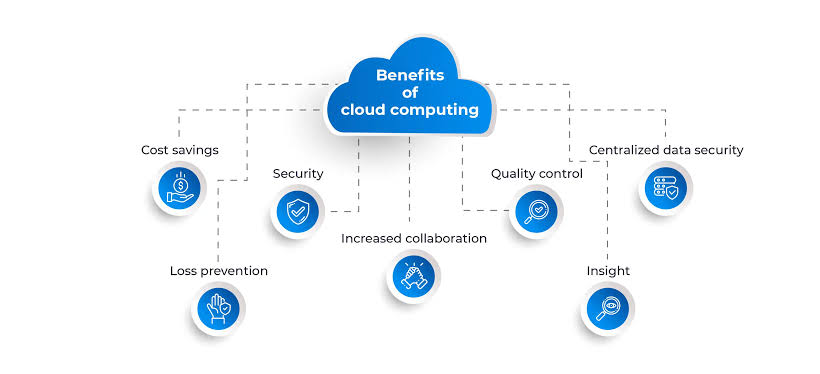In today’s fast-paced digital environment, businesses and individuals alike are turning to cloud-based software solutions as a way to improve efficiency, reduce costs, and maintain flexibility. The cloud has revolutionized how organizations operate by offering on-demand services that can be accessed from anywhere, eliminating the need for heavy infrastructure and complex management systems. Cloud-based solutions are no longer just a trend but a necessity for modern businesses looking to remain competitive in 2025 and beyond.
Cost Efficiency and Savings
One of the most significant benefits of cloud-based software is cost reduction. Traditional on-premises systems require businesses to invest in expensive hardware, servers, and ongoing maintenance. Cloud solutions, on the other hand, operate on a subscription or pay-as-you-go model.
- Companies can avoid large upfront costs for infrastructure.
- Maintenance, updates, and troubleshooting are handled by the cloud service provider.
- Businesses pay only for the resources they use, making scaling more affordable.
This model is especially beneficial for startups and small businesses that want advanced technology without overextending their budgets.
Flexibility and Scalability
Cloud-based software allows organizations to scale their operations quickly based on demand. Businesses can easily upgrade storage, computing power, or user access without major disruptions.
- Seasonal businesses can increase capacity during peak times and reduce it afterward.
- Enterprises can expand to global markets without the limitations of physical infrastructure.
- Startups can grow steadily without worrying about system constraints.
This scalability ensures that companies can adapt quickly to market changes while keeping costs aligned with usage.
Remote Accessibility and Collaboration
Another major advantage is the ability to access software from anywhere, at any time. With cloud solutions, employees, clients, and partners can collaborate seamlessly regardless of location.
- Cloud tools such as project management platforms, file-sharing apps, and communication tools promote teamwork.
- Businesses can hire remote talent without worrying about system access issues.
- Real-time updates ensure everyone works on the same version of documents or data.
This feature has become particularly vital in the era of remote and hybrid work models.
Enhanced Data Security and Backup
Many assume that storing data locally is safer, but cloud-based software providers typically offer higher levels of security than most businesses can afford on their own.
- Data is encrypted during transfer and storage.
- Regular backups reduce the risk of data loss.
- Multi-factor authentication and advanced firewalls protect against cyberattacks.
In addition, cloud platforms often have compliance certifications that make them reliable for industries like healthcare, finance, and government.
Automatic Updates and Maintenance
With traditional software, businesses must handle updates manually, which can be time-consuming and costly. Cloud-based software simplifies this process.
- Providers automatically release updates and patches to improve functionality.
- Businesses benefit from the latest features without additional expenses.
- Reduced downtime ensures smoother workflows.
This ensures that companies are always using the most advanced version of their tools without interrupting productivity.
Improved Business Continuity and Disaster Recovery
Unexpected events such as cyberattacks, natural disasters, or system failures can cripple a business if data is stored locally. Cloud solutions provide reliable disaster recovery options.
- Data is stored across multiple servers and geographic locations.
- Cloud systems allow quick restoration in the event of data loss.
- Businesses can resume operations with minimal disruption.
This resilience helps organizations maintain continuity and safeguard their reputation.
Integration with Other Tools and Technologies
Cloud-based software often integrates easily with other digital tools, creating a more connected and efficient system.
- Accounting tools can link with customer relationship management (CRM) platforms.
- E-commerce stores can integrate with payment systems and analytics tools.
- Artificial intelligence and machine learning solutions can be seamlessly embedded into workflows.
This interconnectedness boosts efficiency and reduces time spent on manual processes.
Supporting Innovation and Agility
Businesses that rely on cloud-based solutions are better positioned to innovate and adapt. By removing the burden of infrastructure, companies can focus more on creativity, product development, and strategic planning.
- Teams can experiment with new tools and scale projects quickly.
- Startups gain a competitive edge with enterprise-level technology at lower costs.
- Organizations can respond faster to customer needs and industry trends.
This agility is a key factor in long-term success in highly competitive markets.
Environmental Sustainability
Using cloud-based solutions can also contribute to environmental sustainability. Cloud providers often run large data centers optimized for energy efficiency.
- Shared infrastructure reduces energy consumption compared to multiple small servers.
- Many providers use renewable energy to power their operations.
- Businesses reduce their carbon footprint by minimizing physical hardware use.
This makes cloud adoption not only a business advantage but also a contribution to global sustainability efforts.
Conclusion
Cloud-based software solutions provide a wide range of benefits, including cost savings, scalability, enhanced security, and improved collaboration. They simplify operations, ensure business continuity, and open doors to innovation while supporting sustainability. As technology continues to evolve, businesses that adopt and optimize cloud-based systems will remain competitive, agile, and resilient in the face of changing demands.




Cool